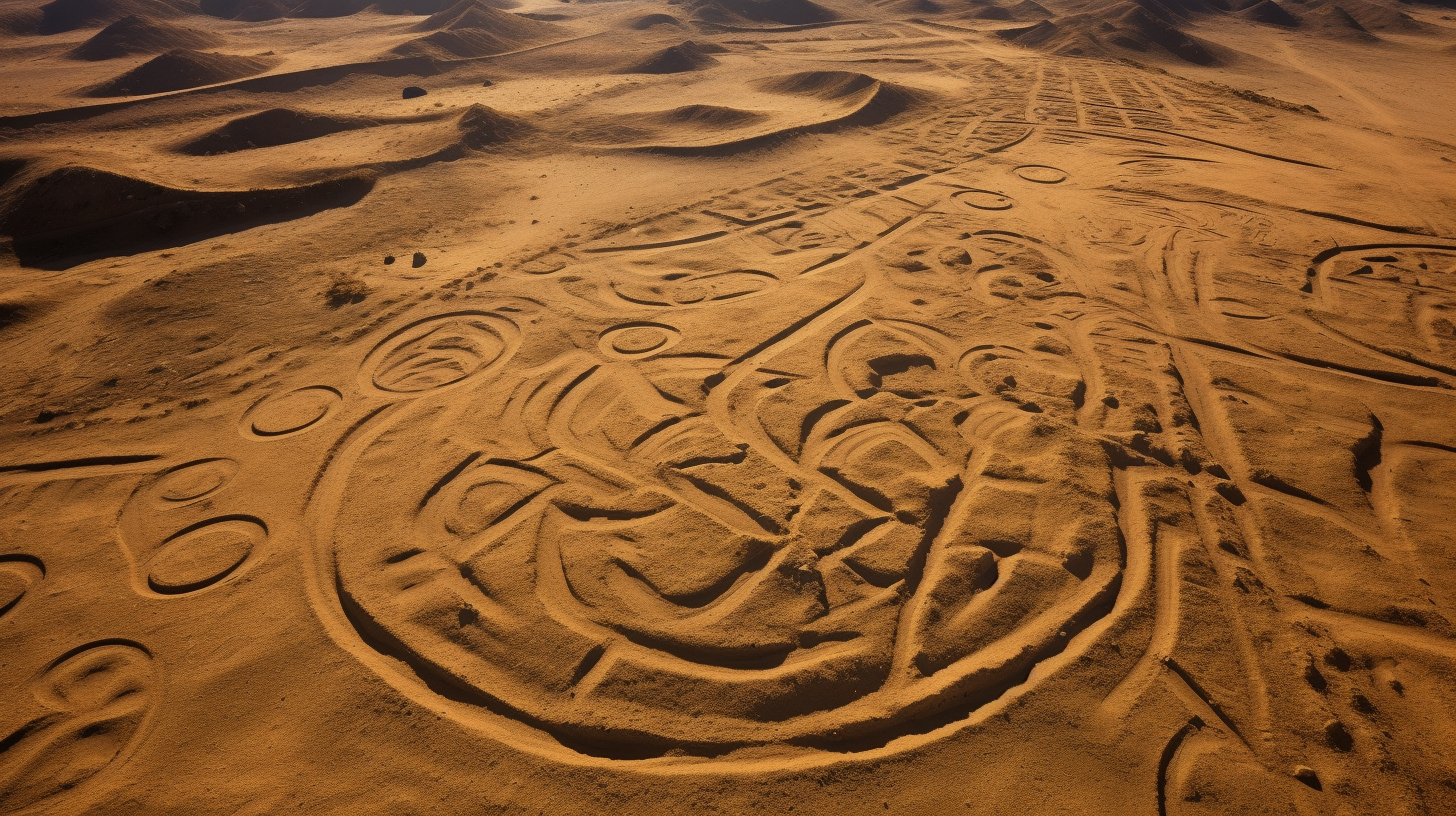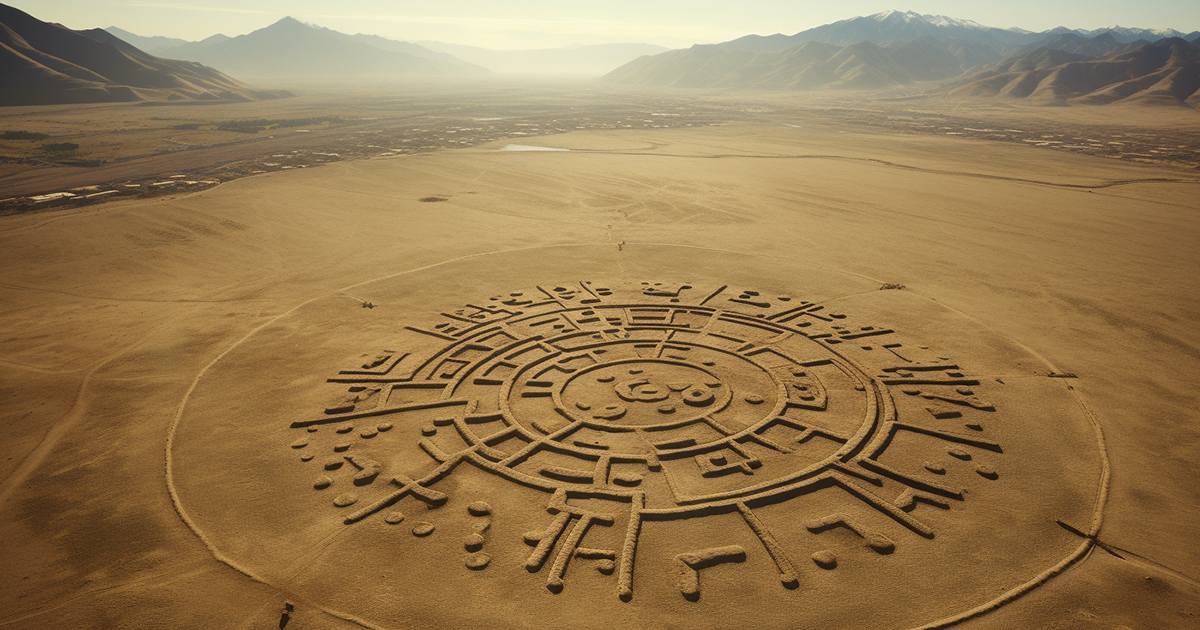Within the vast deserts of Peru, where the arid lands meet the endless sky, a captivating narrative carved into the Earth’s crust emerges—a tale of ancient human innovation, connectivity, and perhaps, cosmic correspondence. The geoglyphs of Peru, colossal earth formations dating back millennia, serve as cryptic relics of a civilization long lost in time. These elaborate and immense designs, often fully comprehended only from great heights, have confounded scholars and fascinated explorers for generations.
An Overview of Peru’s Geoglyphs
The geoglyphs in Peru span across the nation, from the mountainous regions to the seaside and deep into the rainforest. While the Nazca Lines steal the spotlight, there exist other lesser-known locales that harbor equally intriguing enigmas. One of these sites is Caral, which has recently garnered attention for its astounding geoglyphs.

The Enigma of Caral
Situated on the Supe River in the Supe Valley, Caral is often hailed as the oldest city in the Americas, tracing its origins back to approximately 2600 BC. This UNESCO World Heritage site is renowned for its advanced architectural feats and intricate societal structures. However, what truly distinguishes Caral are its geoglyphs.
One of Caral’s most striking geoglyphs is a massive representation of a face. Unlike the well-known Nazca Lines, identifiable from ground level, Caral’s geoglyphs reveal their intricacies best when viewed from the air. This particular face, when observed from above, unveils its complexities—a wide-open mouth, flowing hair, or perhaps something more cryptic.
Adding to the allure of Caral’s geoglyph is its antiquity. While the Nazca Lines are thought to have emerged around 500 BC, the Caral geoglyph dates back thousands of years earlier, potentially reaching as far back as 2000 BC. This substantial time gap challenges conventional understandings of geoglyph construction in Peru and raises the prospect that Caral might have influenced Nazca civilization or shared common cultural ties.
The Global Enigma of Geoglyphs
Peru’s geoglyphs are not exceptional solely in their grandeur and fascination. Recent discoveries of geoglyphs worldwide have added an exciting layer to this mystery. These vast land formations can be found across Asia, the Middle East, Africa, North America, and even Europe.
This naturally leads to the question: Why are geoglyphs present on such a global scale? Is it mere chance, or does a deeper thread connect these seemingly disparate creations?
The Theory of Ancient Astronauts
Exploring this global phenomenon is the Theory of Ancient Astronauts. This concept suggests that our ancient predecessors, regardless of their geographical location or cultural heritage, encountered similar extraterrestrial influences. This theory gains credence when examining the resemblances between geoglyphs worldwide, alongside their mysterious purposes.
For instance, the Atacama Giant in northern Chile, the largest geoglyph in South America, bears a remarkable likeness to the figure of Viracocha, a prominent deity in South American folklore. The notion that this colossal figure represents Viracocha strengthens the idea of shared cultural impacts.
Video:
Celestial Alignments
One of the mesmerizing aspects of Caral’s geoglyphs is their alignment with the Pleiades constellation. This cosmic bond implies that the creators of these formations possessed a deep understanding of the universe, potentially utilizing the geoglyphs for celestial navigation or communication with the stars.
In conclusion, Peru’s geoglyphs, with Caral at their core, provide a window into a past that challenges our preconceptions of ancient societies. These immense monuments not only link distant cultures in South America but also urge us to consider the existence of a global network of wisdom and influence. Whether crafted as messages to deities, aids for celestial orientation, or evidence of ancient cosmic encounters, Peru’s geoglyphs persist in uncovering the mesmerizing secrets of our enigmatic history. As we decode these riddles, one certainty emerges: the truths of our ancient past may be far more intricate and interconnected than we ever dared to envision.
